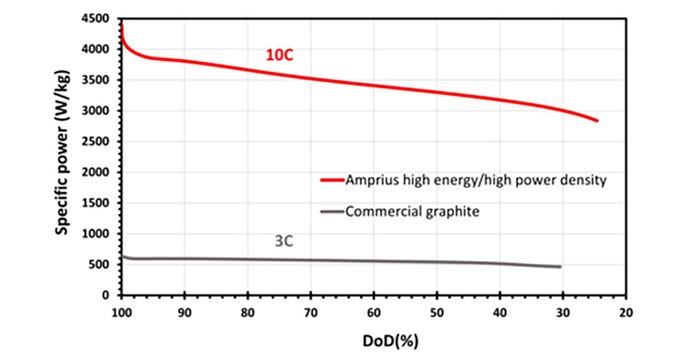Amprius Redefines Batteries for Advancing Aviation and EV Performance
Amprius has developed a new innovative ultra-high-power-high-energy lithium-ion battery with its silicon anode platform.
August 7, 2023

Amprius—a developer of next-generation lithium-ion batteries—has achieved a remarkable discharge rate of 10C and an energy density of 400 Wh/kg. It is particularly beneficial for electric aviation, including crewed and uncrewed aerial systems, which is projected to be a $49B market by 2025. The battery's exceptional power output brings significant advantages to the electric vertical takeoff and landing aircraft (eVTOL) and unmanned aerial vehicle (UAV) industries.
According to Amprius, the battery provides unmatched propulsion power and energy for takeoff, cruise, and landing, extending flight range by up to 50% and increasing payload capacity. Additionally, the battery's capabilities have potential applications in high-performance electric vehicles (EVs), possibly enabling them to achieve acceleration from 0 to 60 mph (0 to 97 km/h) in under 1.5 seconds, setting new performance standards in the EV industry projected to reach $67B by 2025.
“Commercial opportunities in electric mobility are profoundly impacted by their power and energy requirements,” stated Dr. Kang Sun, Chief Executive Officer of Amprius. “Our new cell delivers impressive specific power and energy density performance, approximately 200% higher than traditional graphite cells, while achieving a 10C discharge rate, significantly expanding application possibilities and driving cost-effectiveness.”

The battery's usable discharge capability is extended with a power density of 3500 W/kg in standard discharge conditions and a maximum power exceeding 4400 W/kg at lower depths-of-discharge (DoD). It supports high current pulses even at low states of charge without compromising lower cut-off voltage. The combination of high energy density and high-power density reduces battery weight and volume, leading to extended range, reduced charging frequency, and lower operating costs.
Moreover, the new ultra-high-power cell features an ultra-fast charging capability, reaching 80 percent charge in approximately six minutes or less. This swift turnaround time transforms mission-critical operations, making it highly valuable in various industries.
About the Author(s)
You May Also Like





